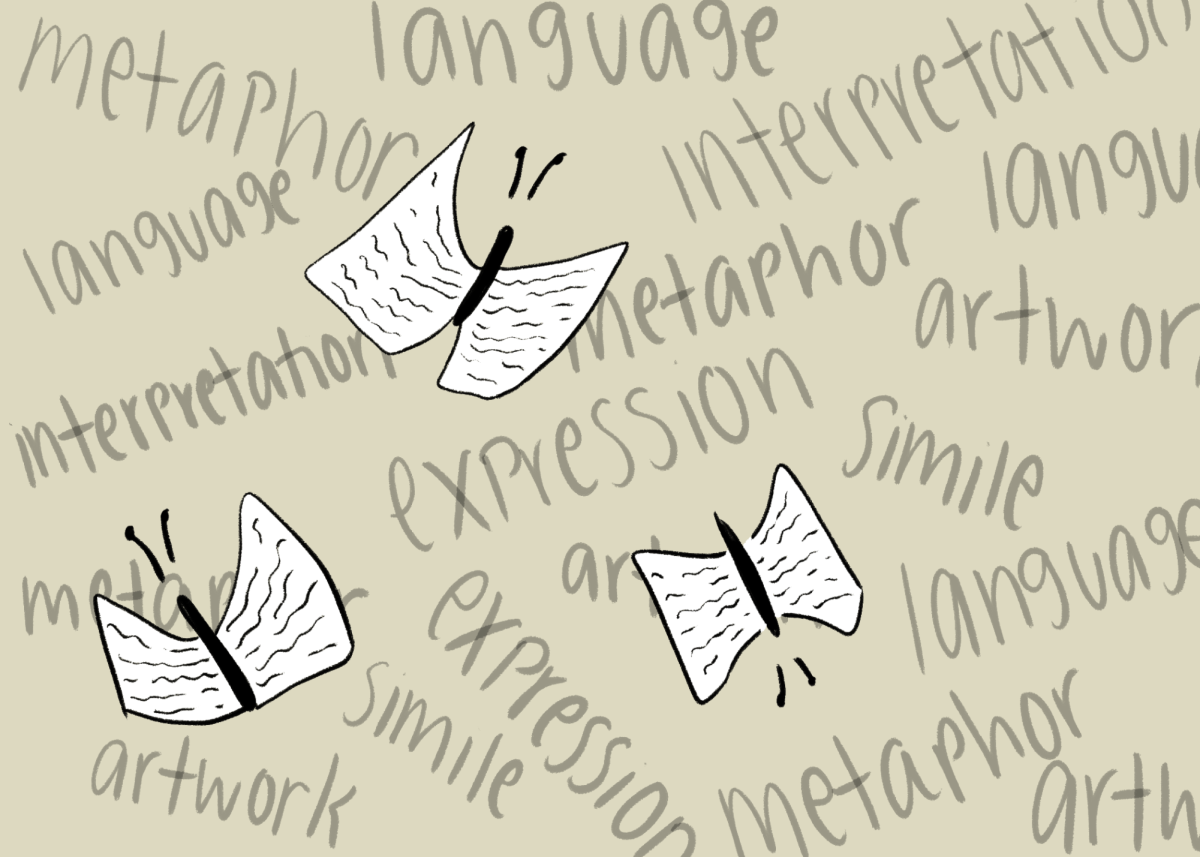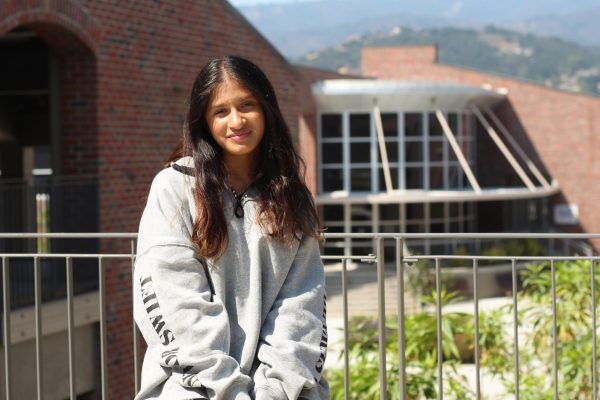The idea for a V-shaped poem came to MVHS ‘23 alum Annika Lee while they were walking their dog. They wrote a poem following the theme “Quatervois” — meaning a crossroads or an important turning point in one’s life — for La Pluma, MVHS’ literary magazine.
“I was thinking, ‘Hey, what if I messed with poetic structure, rather than just detailing someone making a choice’ because it seemed like everyone was going to do that,” Lee said. “And I was like, ‘OK, what if I tried writing a poem in like this V-shape’ and you can read that poem in different ways — you can read it straight across, and then you can also read it down one side, and the other.”

According to Lee, this poem was one of their most memorable works. However, they say its structure also made it one of their most difficult. Thus, despite not citing this as their best piece, “The Crossroads Tree” is still among their favorite pieces.
For Lee, writing has been a way for them to express their emotions since middle school, allowing them to process struggles with their mental health, culture, family and self-discovery. Similar to Lee, senior and La Pluma Co-Editor-in-Chief Anvitha Mattapalli began writing poetry in middle school, with her inspiration being the coursework in her seventh grade literature class.
“I realized that I was basically writing, just never actually on paper — it was always just in my head,” Mattapalli said. “And so that class just gave me the creative outlet to showcase my creative talent onto a paper so other people can experience it as well.”
Sophomore Subin Ko also began writing in middle school, beginning in Korea. However, while the themes of his poems were similar to Mattapalli and Lee’s — typically about nature, with Ko’s first poem being about the ocean and its features — Ko writes in Korean, his mother tongue. He mentions how there are structural and literary differences when writing in two different languages.
“In Korean, we use [more] metaphor[s] than making it [fit] in a structure,” Ko said. “But I think [the] American style is more [about] having a point and structure which [makes] each section [impactful]. But in Korean poetry, it builds up and then just impact[s] at the last moment.”
Ko moved to the United States eight months ago, and since then has found writing in a new language difficult. According to him, Korean comes more naturally in his writing. Although his writing frequency has tapered due to the school year beginning, he primarily writes in Korean, as his friends have encouraged him to write in Korean and slowly adopt American styles and techniques as he sees fit. In one of their favorite works, Lee also emphasizes the barrier that language poses, discussing how their lack of knowledge in Mandarin Chinese often resulted in them feeling out of touch with their culture.
Mattapalli has alternatively used language as an artistic tool in her writing, with one of her favorite pieces incorporating musical terms in different languages. According to Mattapalli, this poem was a commentary on the fast-paced nature of society, and came as a byproduct of her obsession with playing the clarinet.
“I’ve always been very interested in different languages because they’re all different ways of communication,” Mattapalli said. “And so I think just combining them makes it so [that] more people can access it. But also, it brings a whole new meaning to it. And that just really stood out to me, the idea of just combining different things and creating something that’s entirely new, not just two separate things put together.”
While Lee’s and Mattapalli’s favorite poems focus on culture and language, Ko’s favorite poem highlights the toxicity of the education system in Korea.
Regardless of the topic, Lee, Mattapalli and Ko all say they use poetry as a form of expression, allowing them to place words on paper and confront their issues. Whether it be for themselves or a publication, all three believe the process can be healing. Lee says poetry allows them to share their emotions with others.
“The act of putting it down into words makes it concrete in a way that having all the feelings in [your] head doesn’t necessarily do the same,” Lee said. “Like, I can show this to people and they can kind of understand it … You can never fully make sure someone understands exactly what you’re trying to say. But by voicing it, by putting it into words, you can attempt to do that. You can describe it in a way that touches people and they can understand that a little bit better.”










